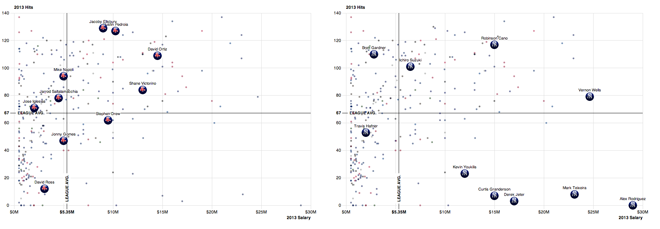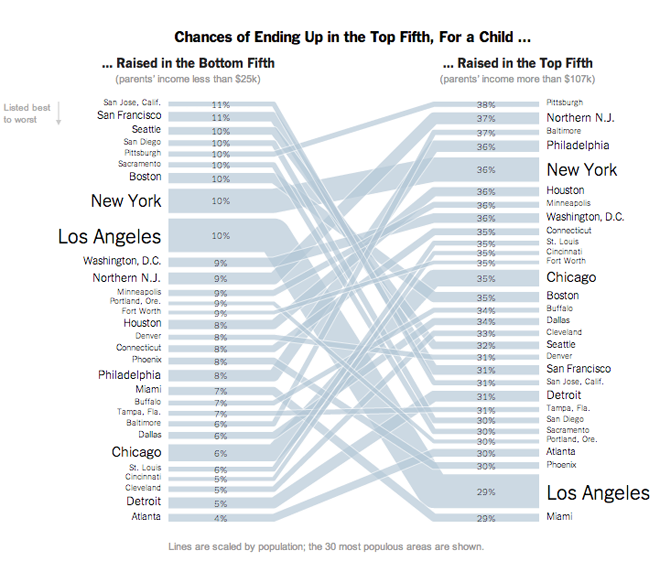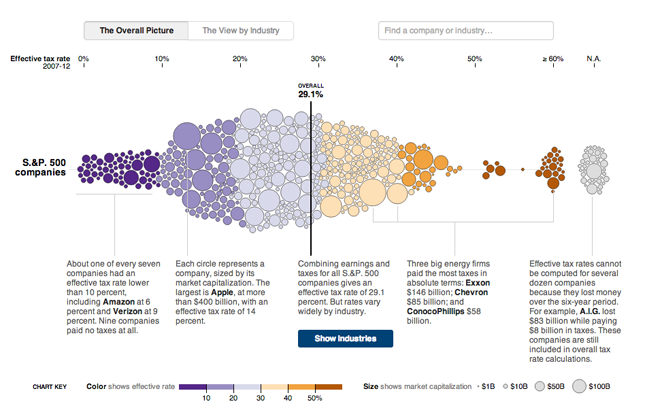Major League Baseball is set to suspend Alex Rodriguez this morning—if the news reports are true. That will all but end the season for Rodriguez, though he could well play through his appeal so you never really know. But what does this mean for the Yankees and their offense?
The New York Times put together an interactive scatter plot charting the annual salary against the number of hits (roughly a measure of offensive production throughout the year) with benchmark lines for the league average of both. First, the user can see the team averages.

At the team-level, one can see that, roughly speaking, the more money a team pays to hitters, the more productive the team. Production it should be noted, does not necessarily equal wins. Look at the Angels, who have some of the most hits, but are in fourth place (out of five) and in a difficult place to make the playoffs.

But then the user can switch to the top-10 paid hitters on each team. (Four presets are offered beneath the piece, but click on a player from any team and his compatriots will appear.) You can see how the Yankees are hitting poorly in comparison to the Red Sox. (The only reason the Yankees are not truly awful is because their pitching has not been horrible.)
So if Rodriguez is suspended for this year and next, maybe they can use his salary for next year to buy a one-year free agent that isn’t at the bottom right of the this chart.
Credit for the piece goes to Mike Bostock and Joe Ward.













